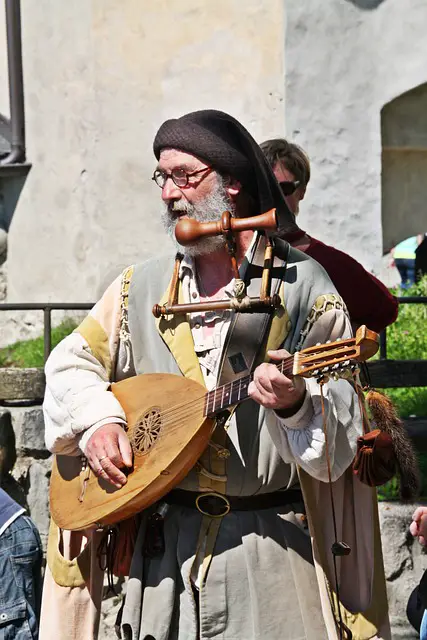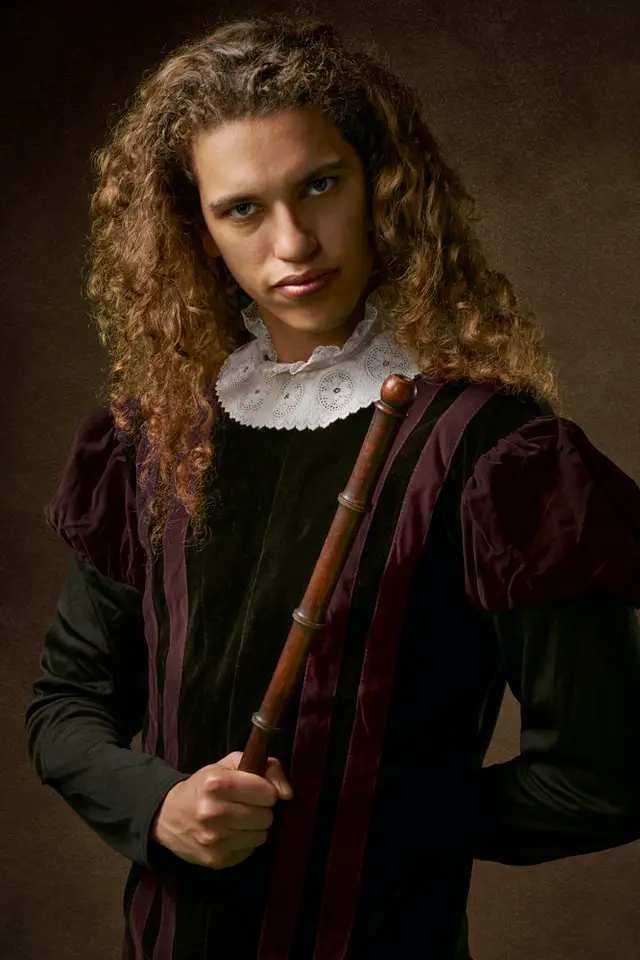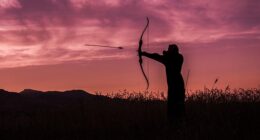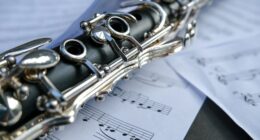Minstrels typically travel from town to town, entertaining people with their music and stories. Bards, on the other hand, often stay in one place and are more focused on writing their own songs and poems. Minstrels usually tend to perform alone while bards often perform with other musicians.
Key Differences between minstrels and bards
(Image by Reinhard Thrainer from Pixabay )

The minstrel and bard tradition is a long and rich one, dating back centuries. Minstrels were originally traveling musicians who performed for audiences in exchange for money or other forms of compensation. Bards, on the other hand, were more like storytellers; they would recite poems or tell tales from their culture’s history. Over time, the two traditions began to overlap and now both minstrels and bards are known for their musical and poetic skills. While bards tended to be more stationary. Minstrels would sing songs and tell stories that were popular at the time, while bards would often perform their own original compositions. Bards were also more likely to be skilled in playing musical instruments.
In terms of their social standing, minstrels were generally lower-class citizens while bards tended to come from wealthier backgrounds. Both minstrels and bards were professional entertainers in medieval times.
Bards
Bards were often associated with being part of the upper class, They usually wrote their own songs, played instruments, and would often tell stories or read poems as part of their act, They were more versatile musicians. Bards were often considered to be artists, and their work was respected by others. Bards were associated with playing secular music. They were also often poets, and their music was more light-hearted in nature. In some cultures, bards were even considered to be healers because of the power of their words.
Minstrels
Minstrels were often itinerant performers who traveled from town to town, they were more focused on their vocal abilities. Minstrels were more likely to come from humble beginnings, they typically played simple instruments, such as guitars or lutes. They would sing cover songs that told stories or recounted historical events. They were often hired by nobles to entertain them at dinner parties or other events Their music was often religious in nature. Minstrels were simple musicians who played for entertainment
The history of minstrels and bards
Minstrels and bards have been around for centuries, entertaining audiences with their music and stories. Though they may seem like similar roles, there are actually some key differences between the two.
For one, minstrels were often more focused on playing music than telling stories. They would perform at fairs and festivals, entertaining the crowds with their tunes. Bards, on the other hand, tended to be more storytellers than musicians. They would spin tales of adventure and romance, often accompanied by a lute or other instrument.
Minstrels were also usually part of a troupe, while bards were often solo performers. This meant that minstrels had to learn to work together and coordinate their playing, while bards could focus on perfecting their craft as individual storytellers.
Today, we still see echoes of these old traditions in modern performers. Musicians who play at Renaissance fairs or Celtic festivals are often called minstrels, while those who tell stories or recite poetry are more likely to be called bards. Whether they’re playing music or spinning yarns, these performers keep the old traditions of minstrelsy and bardic storytelling alive!
The different types of songs sung by minstrels
Minstrels were wandering musicians who performed songs for audiences in towns and villages. They often sang about current events and local news, and their songs were usually light and humorous. Bard, on the other hand, was a term used to describe professional poets and storytellers who worked in royal courts and noble households. Bards were expected to be knowledgeable about many different topics, and their songs were usually more serious in nature.
- Ballads: Minstrels often sang ballads, which were narrative songs that told stories of love, adventure, and heroism.
- Love songs: Minstrels also sang romantic songs that expressed love, desire, and longing.
- Folk songs: Minstrels performed traditional folk songs that were passed down from generation to generation. These songs often told stories of local legends, customs, and traditions.
- Satirical songs: Minstrels sometimes performed songs that poked fun at the wealthy, the powerful, or the foolish.
- Religious songs: Minstrels also sang religious songs, hymns, and carols, which celebrated the Christian faith and offered prayers and devotion.
- War songs: Minstrels sang songs that celebrated the bravery and courage of warriors and soldiers, and commemorated the sacrifices of fallen heroes.
- Instrumental music: In addition to singing, minstrels often performed instrumental music, such as playing the lute, harp, or other musical instruments.
These are just a few examples of the types of songs sung by minstrels. The specific repertoire of a minstrel would have varied depending on the time period, the region, and the individual minstrel’s skills and interests.
The different types of songs sung by bards
There are many different types of songs that bards can sing. Some bards focus on telling stories through their music, while others may focus on more light-hearted and humorous songs. There are also bards who focus on more serious and emotive songs. The type of song a bard sings often depends on their personal style and preference.
Some of the most popular types of songs sung by bards include ballads, laments, love songs, and drinking songs. Ballads are often used to tell stories, and they often have a catchy tune that is easy to remember. Lamentss are typically slower and more melancholic in nature, and are often used to express grief or sorrow. Love songs can be either happy or sad, depending on the context in which they are sung. Drinking songs are usually upbeat and lively, meant to get people moving and dancing.
- Epic poems: Bards often sang epic poems that told the stories of legendary heroes and their battles, adventures, and accomplishments.
- Love songs: Bards also sang romantic songs that expressed love, desire, and longing.
- Folk songs: Bards performed traditional folk songs that were passed down from generation to generation. These songs often told stories of local legends, customs, and traditions.
- Satirical songs: Bards sometimes performed songs that poked fun at the wealthy, the powerful, or the foolish.
- Odes and laments: Bards sang odes that celebrated important events, such as births, weddings, and battles, and laments that mourned the death of loved ones or the passing of a great leader.
- Political songs: Bards sang songs that commented on the political situation of their time, including songs that praised or criticized the actions of leaders and rulers.
- Religious songs: Bards also sang religious songs, hymns, and prayers, which celebrated the Celtic faith and offered devotion to the gods.
These are just a few examples of the types of songs sung by bards. The specific repertoire of a bard would have varied depending on the time period, the region, and the individual bard’s skills and interests.
What were the different types of instruments used by minstrels?
- Lute: The lute was a popular stringed instrument that was played with a plectrum or a finger-picked. Minstrels often used the lute to accompany their singing or to play instrumental music.
- Harp: The harp was another stringed instrument that was played by plucking its strings with the fingers. Harps were often used to play folk songs, love songs, and religious hymns.
- Flute: The flute was a wind instrument that was played by blowing into a pipe. Minstrels sometimes used the flute to play dance tunes or to accompany vocal music.
- Viol: The viol was a stringed instrument that was played with a bow. Minstrels often used the viol to play instrumental music or to accompany singing.
- Drum: The drum was a percussion instrument that was used to provide a rhythmic accompaniment for songs and dances.
- Bagpipes: The bagpipes were a wind instrument that consisted of a bag, pipes, and reeds. Minstrels sometimes used the bagpipes to play dance tunes or to accompany vocal music.
- Dulcimer: The dulcimer was a stringed instrument that was played by striking its strings with small hammers. Minstrels sometimes used the dulcimer to play instrumental music.
These are just a few examples of the types of instruments used by minstrels. The specific instruments used by a minstrel would have varied depending on the time period, the region, and the individual minstrel’s skills and preferences.
What were the different types of instruments used by bards?
- Harp: The harp was a popular stringed instrument that was played by plucking its strings with the fingers. Bards often used the harp to accompany their singing or to play instrumental music.
- Lyre: The lyre was a stringed instrument that was similar to a harp but had a smaller size and fewer strings. Bards sometimes used the lyre to accompany their singing.
- Flute: The flute was a wind instrument that was played by blowing into a pipe. Bards sometimes used the flute to play dance tunes or to accompany vocal music.
- Bodhran: The bodhran was a drum that was played with a double-ended stick. Bards sometimes used the bodhran to provide a rhythmic accompaniment for their songs and dances.
- Bagpipes: The bagpipes were a wind instrument that consisted of a bag, pipes, and reeds. Bards sometimes used the bagpipes to play dance tunes or to accompany vocal music.
- Horn: The horn was a wind instrument that was made from animal horns and was used to signal important events or to accompany music. Bards sometimes used the horn to accompany their songs.
These are just a few examples of the types of instruments used by bards. The specific instruments used by a bard would have varied depending on the time period, the region, and the individual bard’s skills and preferences.
What is the difference between scops and bards?
Scops and Bards were two different types of ancient musicians and storytellers who had distinct cultural and historical origins.
Scops were Anglo-Saxon minstrels who performed in medieval England. They sang epic poems and told stories about heroes and battles, often accompanied by a harp or a lyre. Scops were highly regarded for their ability to recite long and complex poems from memory.
Bards, on the other hand, were ancient Celtic musicians and poets who performed in Ireland, Scotland, and Wales. Bards used their songs and poems to preserve history, to entertain, and to provide commentary on contemporary events. They often accompanied their singing with instruments like the harp, lyre, or flute.
Scops and bards were similar in that they were both minstrels who used their music and storytelling to preserve history and to entertain. However, they had distinct cultural and historical origins, and the specific stories, songs, and instruments that they performed with differed.
What is the difference between a bard and a poet?
A bard and a poet are similar in that they both use the written or spoken word to express their thoughts, feelings, and experiences. However, there are some important differences between the two terms.
A poet is a writer who uses language to create works of art that evoke emotions, paint vivid images, and explore themes and ideas. Poets may write in a variety of styles and forms, including sonnets, free verse, and rhyming couplets.
A bard, on the other hand, is a traditional type of musician and poet who is associated with specific cultural and historical contexts. Bards were a common feature of ancient Celtic cultures, where they used their songs and poems to preserve history, entertain, and provide commentary on contemporary events. Bards often accompanied their singing with musical instruments like the harp, lyre, or flute.
In summary, a poet is a writer who creates works of art through language, while a bard is a traditional type of musician and poet who has a specific cultural and historical context.
What is the difference between a minstrel and a troubadour?
A minstrel and a troubadour are two different types of musicians and performers who had distinct cultural and historical origins.
A minstrel was a medieval European performer who sang and played musical instruments, typically for entertainment and as a form of storytelling. Minstrels often performed in courts, taverns, and other public places. They were known for their ability to sing and play a wide range of songs, including ballads, love songs, and satirical pieces. Minstrels typically played instruments like the lute, harp, or lyre.
A troubadour, on the other hand, was a poet and musician who lived in the courts of the southern French nobility during the 11th to 13th centuries. Troubadours were known for their sophisticated poetry and songwriting, which often dealt with themes of love and chivalry. Troubadours often performed for the nobility and their songs were highly regarded for their elegance and sophistication.
In summary, a minstrel was a medieval European performer who sang and played a wide range of songs, while a troubadour was a poet and musician who lived in the courts of the southern French nobility and was known for his sophisticated poetry and songwriting.
Who are some of the most popular bards in history?
Some of the most popular bards in history include William Shakespeare, Homer, and Virgil. These three bards are some of the most influential and well-known writers in all of Western literature. Shakespeare is considered by many to be the greatest writer in the English language, and his works are studied and performed all over the world. Homer’s epic poems, The Iliad and The Odyssey, are two of the most important works of ancient Greek literature, and have been adapted into countless movies, TV shows, and other works of art. Virgil’s Aeneid is one of the most significant works of Latin literature, and tells the story of the founding of Rome.
Who are some of the most popular minstrels in history?
Minstrels have been around for centuries, entertaining audiences with their music and stories. Some of the most popular minstrels in history include:
- The Wandering Minstrel: A popular figure in medieval England, the Wandering Minstrel was a professional musician who travelled from town to town, performing for audiences.
- Blind Tom Wiggins: A slave born in Georgia in the early 19th century, Blind Tom became a famous pianist and composer, touring the country and performing for President Abraham Lincoln.
- Mark Twain: One of the most popular American writers of the 19th century, Mark Twain often performed as a minstrel, telling humorous stories while playing the banjo.








